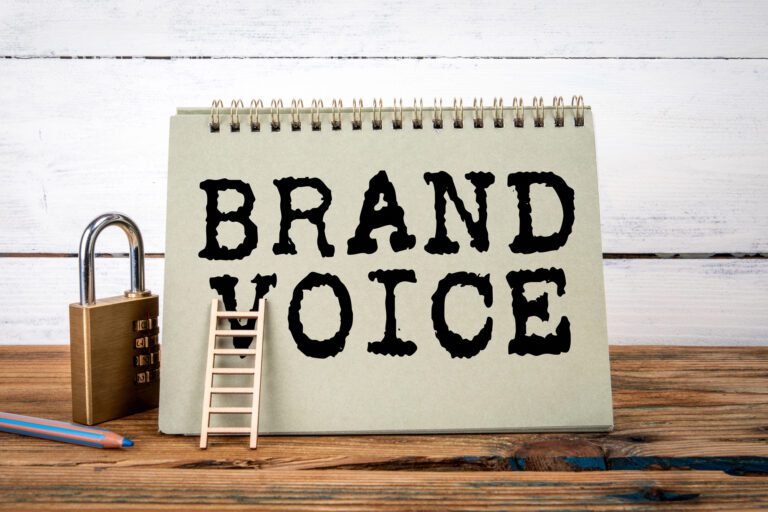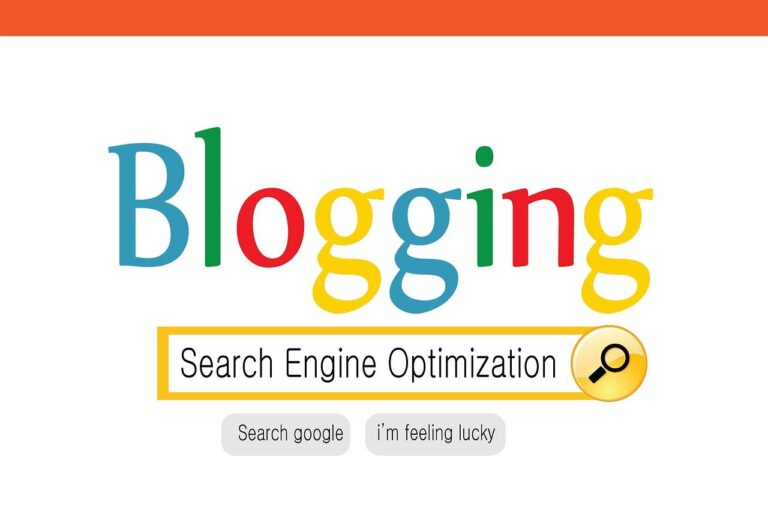Newsletters are a powerful tool for holistic practitioners to connect with clients and build lasting relationships. They offer a unique opportunity to share valuable insights, promote services, and establish authority in the field.
Crafting engaging content that resonates with your target audience is crucial for expanding your reach and creating a strong online presence.

To create newsletters that truly engage your holistic clients, it’s essential to understand their needs and interests. Personalization plays a key role in making your content more impactful.
By tailoring your message to address specific concerns and offering practical wellness tips, you can provide real value to your readers.
Balancing educational content with promotional material is crucial for maintaining reader interest. Share informative articles, videos, and resources that align with your brand and resonate with your ideal clients. This approach not only positions you as an expert but also helps potential clients understand the value of your services.
Key Takeaways
- Personalize your newsletters to address your clients’ specific needs and interests
- Balance educational content with promotional material to provide value and showcase your expertise
- Use compelling subject lines and consistent branding to increase engagement and build trust
Understanding Your Audience

Effective newsletters start with knowing who you’re writing for. Tailoring your content to your holistic clients’ specific needs and interests is key to keeping them engaged and coming back for more.
Defining Your Ideal Client
Begin by creating a detailed profile of your ideal holistic client. Consider their age range, occupation, lifestyle habits, and health goals. Are they busy professionals seeking stress relief? Or retirees looking to maintain vitality?
Think about their values and beliefs regarding holistic health. What motivates them to seek natural remedies or alternative therapies? Understanding these aspects helps you craft content that resonates with their worldview.
Use surveys or questionnaires to gather demographic information from your existing clients. This data can reveal patterns and preferences among your audience.
Identifying Their Needs and Interests
Once you’ve defined your ideal client, dive deeper into their specific needs and interests. What health challenges do they commonly face? Which holistic approaches are they most curious about?
Monitor engagement metrics on your past newsletters to see which topics generate the most clicks or responses. This insight helps you refine your content strategy.
Consider creating a focus group or conducting one-on-one interviews with loyal clients. Ask about their wellness journey and what information they find most valuable.
Pay attention to frequently asked questions in your practice. These often highlight areas where your clients need more education or support.
Personalizing Your Content

Customizing newsletter content for different client segments enhances engagement and relevance. By tailoring messages to specific groups, you can address their unique needs and interests more effectively.
Using Client Segmentation
Client segmentation involves dividing your audience into distinct groups based on shared characteristics. You can segment clients by demographics, interests, purchase history, or engagement levels.
To start segmenting:
- Analyze your client data
- Identify common traits or behaviors
- Create distinct groups
Use surveys or questionnaires to gather additional information about your clients’ preferences. This data helps you create more targeted content for each segment.
Consider using email marketing tools that offer automated segmentation features. These tools can help you manage your segments more efficiently and deliver personalized content at scale.
Tailoring Messages to Different Groups
Once you’ve segmented your audience, craft messages that resonate with each group. Focus on addressing their specific needs, challenges, and interests.
For example:
- For beginners: Provide introductory content and basic tips
- For advanced clients: Share in-depth insights and advanced techniques
- For frequent buyers: Offer exclusive deals or early access to new products
Personalize your subject lines by including the client’s name or referencing their interests. This increases open rates and engagement.
Use dynamic content blocks in your newsletters to display different information based on the recipient’s segment. This allows you to create one template while still delivering personalized content to each group.
Balancing Educational and Promotional Material

Crafting newsletters that blend educational content with promotional elements requires finesse. By striking the right balance, you can provide value to your holistic clients while subtly promoting your services.
Providing Value-Driven Content
Focus on delivering informative content that addresses your clients’ needs and interests. Share wellness tips, holistic health insights, and practical advice they can apply in their daily lives. For example, you might include:
- Seasonal self-care rituals
- Herbal remedies for common ailments
- Meditation techniques for stress relief
Aim for a ratio of 80% educational content to 20% promotional material. This approach positions you as a trusted resource rather than a pushy salesperson.
Consider creating a content calendar to ensure a consistent mix of topics. Vary your formats to keep readers engaged:
- How-to guides
- Q&A segments
- Client success stories
Subtle Promotion Techniques
Integrate promotional elements seamlessly within your educational content. Use soft-sell approaches that highlight the benefits of your services without overtly pushing for sales.
Try these subtle promotional strategies:
- Include client testimonials that showcase specific results
- Mention your services as natural solutions to problems discussed in articles
- Offer exclusive discounts or early access to new programs for newsletter subscribers
Use compelling calls-to-action (CTAs) that align with the content. For instance, after an article on stress management, you might invite readers to book a relaxation session.
Remember to maintain the integrity of your educational content while gently guiding readers towards your offerings. This balanced approach will help you build trust and credibility with your holistic clients.
Creating a Consistent Brand Voice

A consistent brand voice builds trust and recognition with your holistic clients. It helps your newsletters stand out and reinforces your unique identity in the wellness space.
Establishing Your Brand’s Tone and Style
Define your brand personality to guide your newsletter’s voice. Are you nurturing, authoritative, or playful? Choose words and phrases that align with this persona. Consider your target audience – their age, interests, and communication preferences.
Create a style guide outlining:
- Preferred terminology
- Sentence structure
- Use of humor or metaphors
- Formatting preferences
Engage with your clients through surveys or social media to understand their language preferences. This helps fine-tune your voice for maximum impact.
Maintaining Consistency Across Newsletters
Implement a content strategy to ensure voice consistency. Use your style guide for every newsletter. Train all writers on your brand voice guidelines.
Regular content audits help maintain consistency. Review past newsletters to identify any deviations from your established voice.
Adapt your tone slightly for different topics while keeping core elements consistent. For example, use a more empathetic tone for sensitive health topics.
Create templates with pre-approved language for common sections. This maintains consistency in greetings, calls-to-action, and sign-offs.
Leveraging Client Stories

Client stories are powerful tools for building trust and showcasing your holistic services’ real-world impact. These narratives demonstrate the value you provide and help potential clients envision their own success.
Collecting and Sharing Testimonials
Ask satisfied clients for testimonials after successful treatments or programs. Encourage them to share specific details about their experience and results. Use a brief questionnaire to guide their responses.
Create visually appealing testimonial formats for your newsletter. Consider using pull quotes, client photos, or before-and-after comparisons.
Obtain written permission to use testimonials. Respect client privacy and use only first names or initials if preferred.
Rotate testimonials regularly to keep content fresh. Group similar experiences to address common concerns or highlight specific services.
Highlighting Client Success Stories
Feature in-depth client success stories as centerpieces in your newsletter. Choose diverse cases that represent your range of services and client demographics.
Structure success stories with a clear beginning, middle, and end. Describe the initial challenge, your holistic approach, and the positive outcomes achieved.
Use compelling headlines to grab attention. For example: “Jane’s Journey: From Chronic Pain to Vibrant Health.”
Include concrete details and measurable results to add credibility. Mention specific improvements in symptoms, lifestyle changes, or personal goals reached.
Incorporate client quotes throughout the story to add authenticity. Balance professional insights with the client’s personal perspective.
Incorporating Seasonal Wellness Tips

Tailoring your newsletter content to the changing seasons enhances relevance and engagement. By aligning wellness advice with the natural rhythms of the year, you provide timely, practical information that resonates with your clients’ current needs and experiences.
Aligning Content with Seasonal Changes
Focus on wellness topics that naturally fit each season. In spring, highlight detoxification and renewal. Summer newsletters can feature sun protection and hydration tips. Fall is ideal for immune-boosting strategies and stress management as routines shift. Winter content might emphasize indoor exercises and mood-lifting techniques.
Tap into seasonal themes to make your newsletter more inviting. Use imagery that reflects the current season – bright flowers for spring, beach scenes for summer, colorful leaves for fall, and cozy winter settings. This visual alignment helps create a cohesive and timely feel.
Consider the psychological impact of seasons on your readers. Address seasonal affective disorder in winter or offer tips for maintaining routines during summer vacations.
Offering Timely Advice and Tips
Provide practical, season-specific wellness tips your clients can easily implement. For summer, share recipes for refreshing, hydrating smoothies. In winter, offer guidance on vitamin D supplementation and the importance of light exposure.
Highlight seasonal produce and their health benefits. Create simple, healthy recipes using in-season ingredients to encourage nutritious eating year-round. This not only promotes health but also supports local and sustainable food choices.
Address seasonal health concerns proactively. Offer allergy management tips in spring, heat safety in summer, flu prevention in fall, and cold remedies in winter. By anticipating your clients’ needs, you position yourself as a valuable, year-round wellness resource.
Crafting Engaging Subject Lines
The key to a successful holistic health newsletter lies in its subject line. A well-crafted subject line grabs attention and entices readers to open your email.
Techniques for Writing Compelling Subject Lines
Keep your subject lines concise. Aim for 5-10 words or 40-50 characters. Use action verbs to create a sense of urgency. Incorporate curiosity-generating elements to pique interest.
Personalization can significantly boost open rates. Include the recipient’s name or reference their location when relevant.
Use power words that resonate with your holistic clientele, such as “natural,” “balanced,” or “healing.” Avoid spam trigger words like “free” or “guarantee.”
Consider using questions to engage readers. For example, “Ready to boost your energy naturally?”
Testing and Optimizing for Better Open Rates
A/B testing is crucial for improving your subject lines. Create two versions and send them to small segments of your list. Then, track which performs better and use those insights for future campaigns.
Monitor your open rates and adjust your strategy accordingly. Pay attention to which types of subject lines resonate most with your audience.
Try different approaches:
- Benefit-focused: “5 herbs to reduce stress today”
- Time-sensitive: “Last chance: Holistic health webinar tonight”
- Intriguing: “The surprising link between gut health and mood”
Remember to align your subject line with the email content to maintain trust with your readers.
Conclusion

Crafting compelling newsletters is a powerful way to connect with your holistic practice clients. By consistently delivering valuable content, you build trust and establish yourself as an expert in your field.
Remember to focus on your clients’ needs and interests. Provide practical tips, share inspirational stories, and offer insights that resonate with their wellness journey.
Keep your content concise and easy to digest. Use a mix of formats like short articles, lists, and infographics to maintain engagement.
Personalize your newsletters whenever possible. Address your readers by name and tailor content to their specific interests or health goals.
Don’t forget to include clear calls-to-action. Invite readers to book appointments, attend workshops, or explore your services.
Regularly analyze your newsletter performance. Track open rates, click-throughs, and subscriber growth to refine your approach over time.
By implementing these strategies, you’ll create newsletters that not only inform but also inspire and motivate your holistic clients to take positive action in their lives.
Frequently Asked Questions
Creating engaging newsletters for holistic health clients requires careful consideration of content, personalization, and delivery strategies. The following questions address key aspects of crafting impactful wellness communications that resonate with your audience.
What are the key elements of a captivating newsletter for holistic health clients?
A captivating holistic health newsletter should include interactive elements that encourage reader participation. Incorporate visually appealing graphics and images that complement your content.
Provide exclusive tips, recipes, or wellness techniques that your clients can’t find elsewhere. This adds value and keeps them looking forward to your newsletters.
How can I effectively incorporate storytelling into my wellness newsletters?
Share client success stories or personal anecdotes related to holistic health practices. This helps readers connect emotionally with your content.
Use narrative techniques to explain complex wellness concepts, making them more accessible and memorable for your audience. Keep stories concise and relevant to your newsletter’s main topic.
Which strategies work best for personalizing content in holistic health newsletters?
Segment your email list based on clients’ specific health interests or goals. This allows you to tailor content to different groups within your audience.
Use merge tags to insert individual names or reference past interactions. Personalized messages can significantly increase engagement and make readers feel valued.
What types of content drive the most engagement in a health and wellness newsletter?
Practical, actionable tips that readers can implement immediately tend to drive high engagement. Include quick exercises, meditation techniques, or nutritional advice.
Educational content that explains the “why” behind holistic practices can also be very engaging. Balance this with lighter, inspirational content to maintain reader interest.
How frequently should I send out newsletters to my holistic client base without overwhelming them?
A consistent schedule is key, but frequency depends on your content quality and audience preferences. Start with monthly newsletters and adjust based on engagement metrics.
Consider sending shorter, more frequent updates for time-sensitive information, and longer, more comprehensive newsletters less often.
What are the best practices for integrating client feedback into future newsletter editions?
Regularly survey your readers to understand their preferences and pain points. Then, use this feedback to refine your content strategy and topics.
Create a system to track common questions or requests from clients. Address these topics in future newsletters to show you’re listening and providing relevant information.






